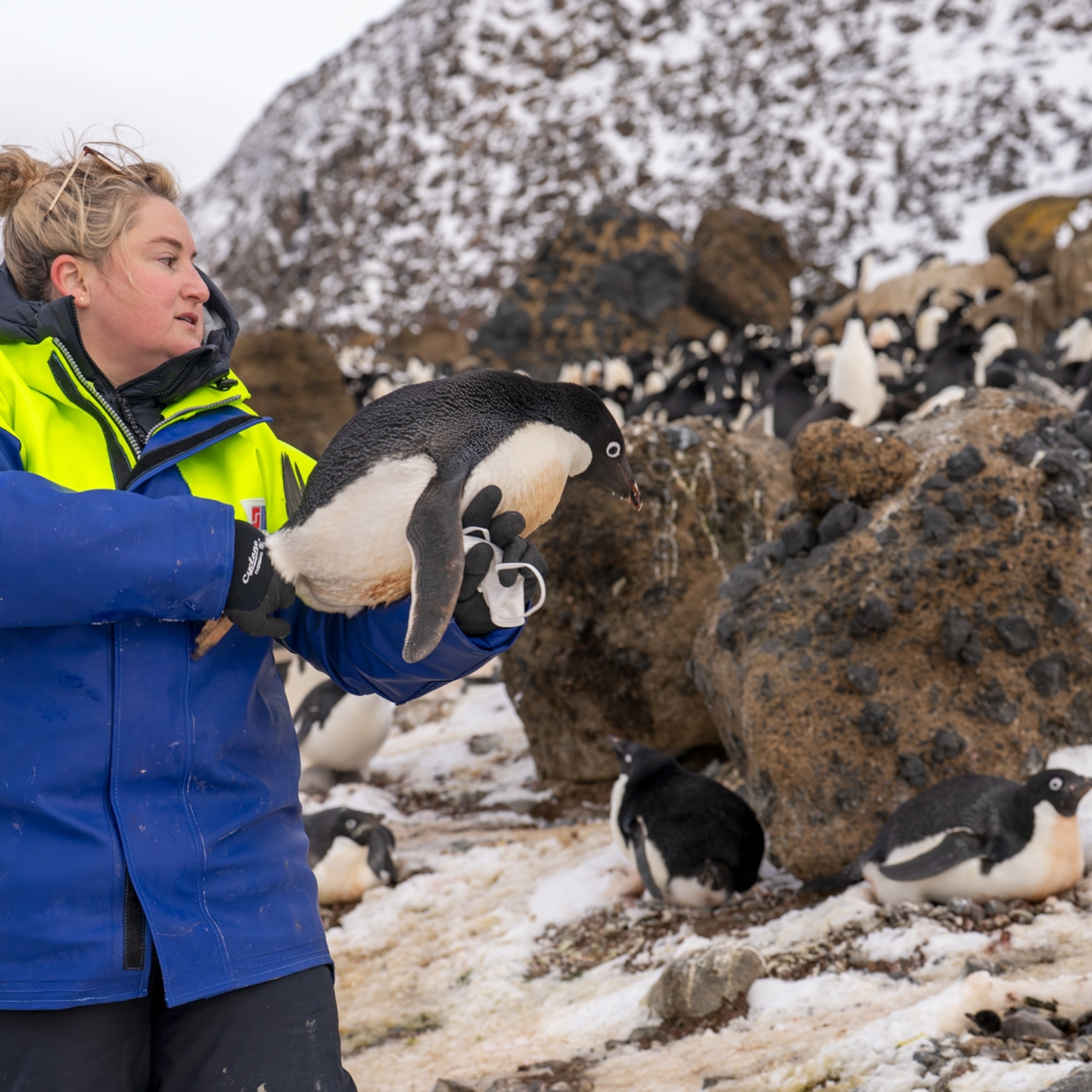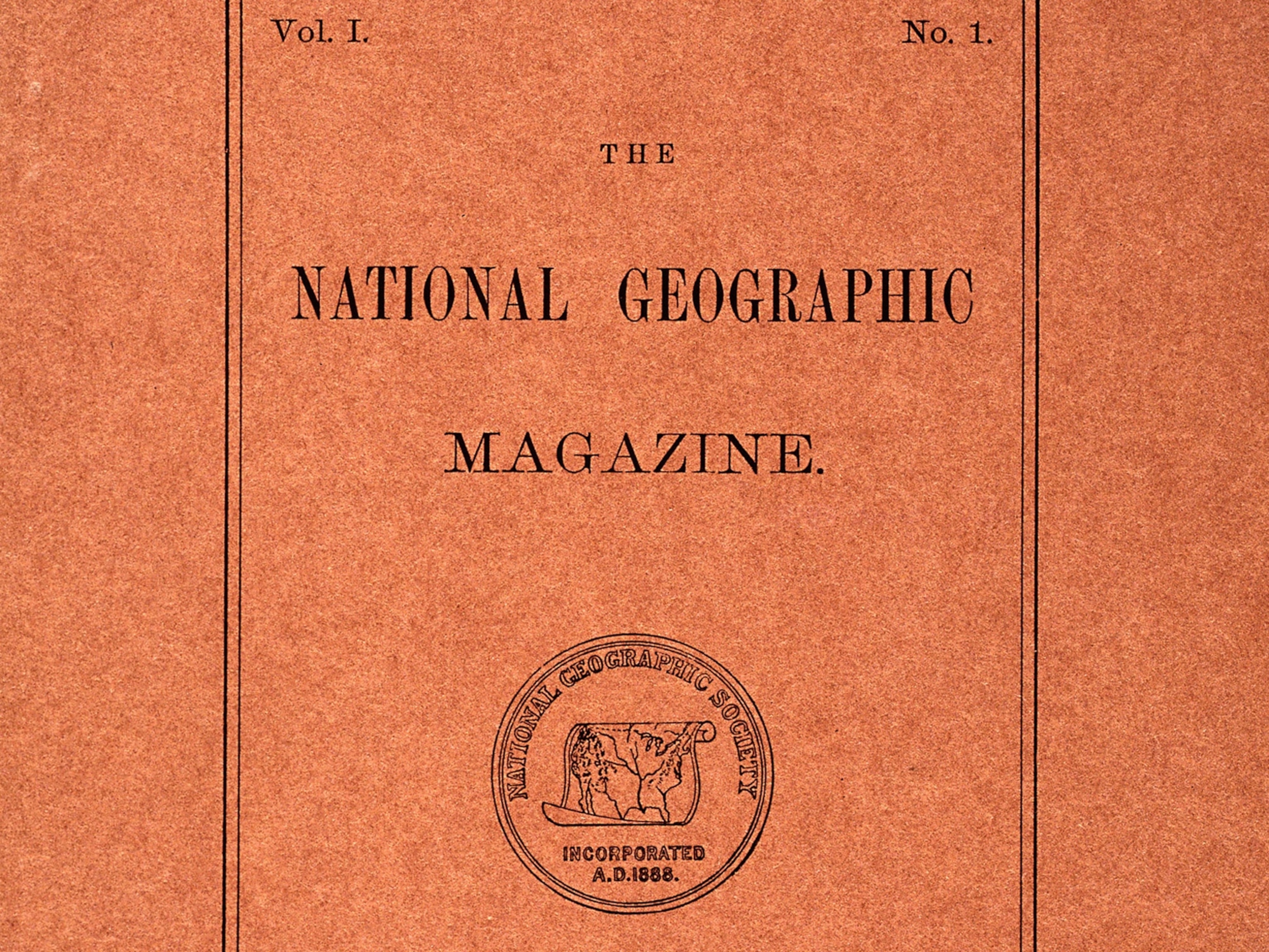
South Pole Travel Heats Up on 100th Anniversary of "Discovery"
A hundred years ago, a Norwegian team beat the British to the pole.
By plane and by skis, a steady stream of visitors are flocking to the South Pole in time for the centennial celebrations of two pioneering Antarctic expeditions.
A hundred years ago, on December 14, 1911, Norwegian explorer Roald Amundsen and his team became the first humans to reach the geographic South Pole, which sits in a lifeless desert nearly 1,000 miles (1,600 kilometers) from the Antarctic coast.
A little more than a month later, on January 17, 1912, British explorer Robert Falcon Scott and his team also reached the Pole, but they died on the return journey. (Find out how Amundsen won the race to the South Pole, in his own words.)
Enlarge picture of penguins >>

Today, some intrepid travelers still make it to Earth's southernmost point, though they're only a small fraction of the approximately 30,000 people who visit Antarctica each year, according to the International Association of Antarctica Tour Operators.
(Read a first-person account of visiting the South Pole.)
"There's a lot of excitement over the centennial anniversaries, and there's been more interest in South Pole expeditions because of that," said Annie Aggens, a spokesperson and guide for Polar Explorers, an Illinois-based company that specializes in expeditions to polar regions.
For instance, the company usually takes about two teams of four to six people to the South Pole a year, but this year they're taking at least four, Aggens said.
Though the Antarctic tour operators' organization has not made an exact estimate, there will likely be hundreds of people making the pilgrimage to the Pole during the 2011-2012 Southern Hemisphere summer season.
These visitors will also be joined by Norwegian Prime Minister Jens Stoltenberg, who is at the Pole today to mark the anniversary of countryman Roald Amundsen's expedition. (Watch archival video of Amundsen's South Pole trek.)
Stoltenberg, who will arrive by plane, will be only the second head of government to visit the South Pole, after New Zealand's Prime Minister Helen Clark in 2007.
South Pole Travel Not Cheap
Most visitors to Antarctica remain aboard cruise ships or coastal camps. Getting to the South Pole, though, requires either skiing from the coast or flying in via private helicopter.
There are no facilities for travelers at the Pole—the only settlement, the U.S. Amundsen-Scott South Pole research station, does not usually house tourists. (Read "Race to the South Pole" in National Geographic magazine.)
This season, however, tourists will be able to stay at a base camp that has been set up especially for celebrations and events tied to the anniversaries.
Many of the people who want to visit the South Pole are attracted by the idea of experiencing something that the early explorers did, Aggens noted.
Though cold-weather gear has much improved, and it's now possible to phone home at the end of each day, "when you've got a sled behind you and it's minus 40 degrees out, you're very much in the same conditions that Scott or Amundsen experienced," she said.
(See pictures from the Amundsen and Scott expeditions.)
The ages of South Pole-bound visitors varies widely, but they generally tend to be between about 45 and 60 years old, she added.
"Being older allows them a couple of things," she said. "They don't have commitments with children and things like that. And many of them also have a lifetime of working behind them and have the income to be able to do a trip that is not inexpensive."
Just how inexpensive? Polar Explorers charges U.S. $45,500 for a flight to the pole on either anniversary and $65,000 for a two-month ski expedition, which involves pulling a 90-pound (41 kilogram) sled for 700 miles (1,126 kilometers). (See a hi-res Antarctic map.)
"They're skiing the whole way, from the coast of Antarctica to the South Pole," Aggens said. "Every waking moment of the day, they're either eating or setting up or breaking camp or skiing."
South Pole Tourist Inspired by Explorers
The company also offers a combo flight-and-ski trip that lasts approximately two weeks for about $50,000.
This is the package that Mike Strong, a 60-year-old landscape contractor from Wichita, Kansas, chose for his South Pole trip in 2009.
Strong grew up reading about famous explorers and knew he wanted to go on adventures and expeditions since an early age.
(Read about National Geographic's modern-day explorers.)
He'd also read Alfred Lansing's book Endurance, about British explorer Ernest Shackleton's failed South Pole expedition, and thought that he'd like to go there one day.
He had that same thought again in a hotel lobby in 2006 after successfully climbing Tanzania's Mount Kilimanjaro. He heard someone mention that only a few dozen people had climbed the seven highest peaks and been to both poles.
"I thought that was cool, and the more I thought about it, the more I thought I'd kind of like to do that," said Strong, who has completed more than 50 triathlons and recently finished his first 100-mile (160-kilometer) ultramarathon.
So in 2008, Strong signed up for a 60-mile (96-kilometer) ski expedition to the North Pole with Polar Explorers. He followed that up in 2009 with his South Pole adventure.
"Skiing Through Milk"
For many tourists, Antarctica is as extreme as it gets.
The cold, which can reach the negative teens in summer, combines with wind and dry air to make physical exertion a challenge.
And during December and January—the height of austral summer, when most tourists visit—the sun never sets.
On a clear day, sunlight and ice crystals in the air can combine to make everything glitter, and visitors might glimpse a "sun dog," or a circular rainbow ringing the sun.
(See picture: "Double Sun Dog Dazzles Icy Omaha.")
Other times, the snow swirls so thick that the air seems to merge with the ground and the horizon, and all landmarks disappear.
Traveling in such whiteout conditions, Strong said, was like "skiing through milk."
Even just the flight to the South Pole can be a shock.
Polar Explorers' Aggens said, "You're in a place that's extremely cold, and you get off the plane at 9,300 feet [2,834 meters] of altitude, but because of the polar atmosphere, it feels closer to 12,000 feet [3,657 meters]."
Trekking for the Blind
Briton Richard Smith is experiencing some of these Antarctic phenomena for the first time on a trek from the Antarctic coast to the South Pole. Smith is part of a four-person team called Polar Vision, which is raising funds and awareness for sight charities.
Smith and team members Andrew Jensen and Hannah McKeand are traveling with Alan Lock, a former British Royal Navy officer who lost his sight as a result of macular degeneration. The Polar Vision team, 16 days into their trip, is expected to arrive at the South Pole in January.
"The landscape can be described as a 'white' desert, the sky is incredible, with every shade of blue, and although it's 24-hour sunlight with the sun circling around, you do get a change in the light and the shade," Smith relayed to an assistant in the U.K. recently via satellite phone, who then emailed National Geographic News Smith's observations.
"When you are still and there is little or no wind, there is a silence. You can smell and taste the fresh cleanliness. The snow creates some fascinating structures of all different shapes and sizes; it could be likened to modern art sculptures," he said.
South Pole Celebrations
Once at their destination, South Pole visitors can also take a tour of the Amundsen-Scott research station, which is home to various scientific experiments, including the IceCube neutrino observatory. (See "Photos: Huge Observatory 1.5 Miles Deep in Antarctic Ice.")
The geographic pole is designated by a brass marker that's moved each year as the marker shifts due to ice sheet movement. Nearby, people can take their pictures at the ceremonial pole, which is ringed by the flags of the original 12 nations that signed the Antarctic Treaty.
People celebrate their polar feats in various ways, said Strong, who took the 2009 trip.
"You've got all kinds of antics. People take their shirt—or more—off," he said. "I personally did a handstand and walked around the Pole."
Overall, Strong said his time in Antarctica was like visiting another world.
"You get out on the ice and you're in the middle of nowhere," he said.
"You're just this little speck on this vast continent, and you have a sense of vastness and isolation. And, I suppose, for people like me, that's exciting."
Would you go to the South Pole? Leave a comment below.







